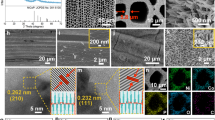Abstract
DURING aerial exposure, some littoral marine bivalve molluscs, for example Mytilus1 and Mercenaria2,3, have been shown to close their valves and respire anaerobically. The major by-product of anaerobiosis in the clam Mercenaria mercenaria is succinic acid which is neutralised by the dissolution of calcium carbonate previously deposited in the shell2,3. The ability of bivalves to respire anaerobically has been well documented, an early review on this subject4 records a variety of species which are able to survive long periods in the absence of oxygen. Most evidence for anaerobic metabolism in bivalves is based on observations that on return to aerobic conditions, oxygen consumption rapidly rises to levels above normal5,6. A similar ‘over shoot’ in heart rate has been reported1,7,8. These observations have been explained as representing an increase in circulatory and respiratory activity associated with the repayment of an ‘oxygen debt’ incurred during the period of anaerobiosis. The changeover from aerobic to anaerobic respiration in bivalves has been reported to occur when the oxygen tension of the surrounding water falls to very low levels or to low tide when the bivalves may close the valves7,9,10. We report here results which are part of an extensive study of osmotic and behavioural responses of Scrobicularia plana (Da Costa), a euryhaline estuarine species, to varying concentrations of seawater and demonstrate the use of calcium from the shell to buffer the products of anaerobiosis. The concentrations of sodium, potassium, magnesium and calcium were measured by atomic absorption spectrophotometry in the body fluids and medium under different conditions of osmotic stress at 10 °C
This is a preview of subscription content, access via your institution
Access options
Subscribe to this journal
Receive 51 print issues and online access
$199.00 per year
only $3.90 per issue
Buy this article
- Purchase on Springer Link
- Instant access to full article PDF
Prices may be subject to local taxes which are calculated during checkout
Similar content being viewed by others
References
Helm, M. M. & Trueman, E. R. Comp. Biochem. Physiol. 21, 171–177 (1967).
Crenshaw, M. A. & Heff, M. J. Am. Zoologist 9, 881–885 (1967).
Dugal, L. P. J. cell. comp. Physiol. 13, 235–250 (1939).
Von Brand, T. Biodynamics Mono. 4, (1946).
Schleiper, C. Année biologique 33, 117–127 (1957).
Moon, T. W. & Pritchard, A. W. J. exp. mar. Biol. Ecol. 5, 35–46 (1970).
Trueman, E. R. Nature 214, 832–833 (1967).
Brand, A. R. thesis, Univ. Hull (1968).
Taylor, A. C. & Brand, A. R. Proc. R. Soc. 190 B, 443–456 (1975).
Taylor, A. C. J. exp. Biol. 64, 751–759 (1976).
Pierce, S. K. Comp. Biochem. Physiol. 38 A, 619–635 (1971).
Potts, W. T. W. & Parry, G. Osmotic and Ionic Regulation in Animals; (Pergamon, New York, 1963).
Prosser, C. L. Comparative Animal Physiology (W. B. Saunders, Philadelphia, 1973).
Author information
Authors and Affiliations
Rights and permissions
About this article
Cite this article
AKBERALI, H., MARRIOTT, K. & TRUEMAN, E. Calcium utilisation during anaerobiosis induced by osmotic shock in a bivalve mollusc. Nature 266, 852–853 (1977). https://doi.org/10.1038/266852a0
Received:
Accepted:
Issue Date:
DOI: https://doi.org/10.1038/266852a0
This article is cited by
-
Bivalve molluscs as biosensors of water quality: state of the art and future directions
Hydrobiologia (2023)
-
Using Heavy Metal Content and Lipid Peroxidation Indicators in the Tissues of the Mussel Crenomytilus grayanus for Pollution Assessment After Marine Environmental Remediation
Bulletin of Environmental Contamination and Toxicology (2015)
-
Physiological and biochemical aspects of the valve snap and valve closure responses in the giant scallopPlacopecten magellanicus
Journal of comparative physiology (1980)
Comments
By submitting a comment you agree to abide by our Terms and Community Guidelines. If you find something abusive or that does not comply with our terms or guidelines please flag it as inappropriate.



